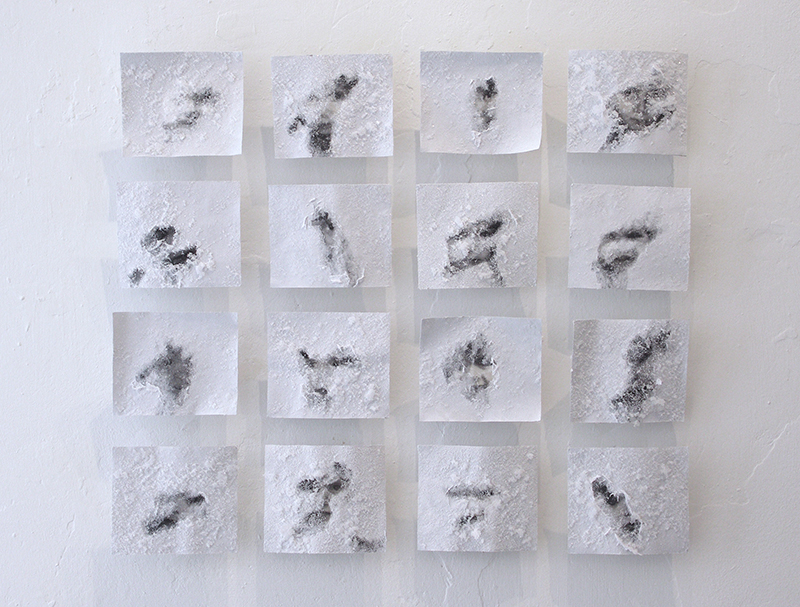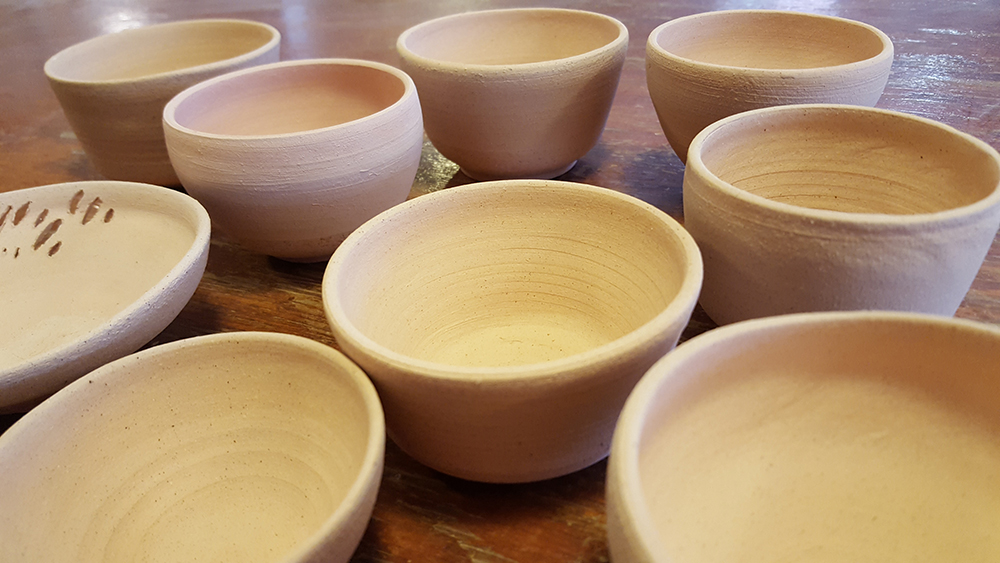Yuka Otani wants to challenge the current classification and labelling of "glass art," and she is doing so with an independent exhibition entitled "Emancipation: how to make a work of glass that isn't glass" taking place during the upcoming Glass Art Society conference in Corning, New York (June 9 - 11, 2016). Otani, who holds an MFA from the Rhode Island School of Design (2008) and a BFA from Tama Art University in Tokyo (2000), has organized provocative exhibitions before. In 2009, concurrent with an earlier GAS conference at Corning, she and co-curator Anjali Srinivasan organized a group exhibition entitled "How is This Glass" in multiple venues. In 2010, Otani and Srinivasan also put together a "Post-Glass Video Festival" that was screened at Heller Gallery and other venues. But her latest project is unique in its break with the material of glass itself — none of the work actually includes glass but Otani feels embraces it as a quality or metaphor. The GLASS Quarterly Hot Sheet recently had the opportunity to explore the ideas behind "Emancipation" in a conversation with Otani to better understand the concepts fueling the project. —AP
GLASS Quarterly Hot Sheet: Do you see a connection between this exhibition and the "How is this Glass" exhibition you co-curated with Anjali in 2009?
Yuka Otani: Yes, there are overlapping areas of interest between “Emancipation” and Yukanjali projects. “How to make a work of glass that isn’t glass?” resonates with “how is this glass?" Where “Emancipation” differs is that it is an “exhibition about glass without glass,” and reflects much of my current artistic practice. The idea of this exhibition is inspired by the essay titled “Czech Glass in a Context" (2006) written by Dr. Sylva Petrova in which she describes “emancipation from glass” as “one of the most typical features of the Czech glass education and practice” namely in the 1980s and 1990s. At that time, highly educated art students tried to subordinate glass to their art ideas. Thus, they were interested in glass “occasionally” when their projects required transparency, translucency or reflection… I found this term quite fascinating because I studied art in glass-specific curriculums and I felt similar when developing my own artwork. I learned many important things from the experience of working in glass, and I did appreciate the depth of its craft, however, I just did not want to limit my method to a single medium. Thus “emancipation from glass” did happen to me, though there are still apparent connections between the idea of “glass” and many of my non-glass works. And I also found this way of approach among my peer artists who studied in a glass program. The artists featured in the exhibition show actively in the field of studio glass, but they often produce multi-disciplinary works as well.
“Emancipation from glass” can be observed in different places around the world where artists create works in the crossover fields of studio glass and contemporary art. In terms of academic institutions, RISD, Prague Academy and Rietveld Academy are just a few examples of the places that encourage students to be very open about the media they use. However, it's a phenomenon that is easily overlooked in today’s glass world because it no longer belongs to the realm of “glass art." Yet, there are many “glass-related works” or “glass-inspired works” that are too interesting to be overlooked. So that’s why I decided to make an exhibition about them.
I should also add that “Emancipation from glass” is a departure point for this project, but the concept and selection of the artists in the exhibition are made through my personal interpretation of the term. (Though I feel quite lucky that I got in touch with Dr. Petrova through an email conversation in which she provided me some insightful thoughts about her term, and she gave me a permission to cite her essay in my project.)
GLASS: Why are you proposing to have this exhibition (like the 2010 exhibition) at the GAS conference taking place in Corning rather than at another city? Is there something about the GAS conference taking place at the Corning Museum of Glass that makes this exhibition opportunity special, or is it just a random coincidence? And a follow-up: why would you do this exhibition at the GAS conference rather than in a more contemporary-art context?
Yuka: It's important to present this exhibition to the glass community first because it is where the theme of the exhibition is rooted. And it is a timely topic for the current studio glass scene in which many active conversations about “what is next?” are underway (not to mention the efforts by Hyperopia Projects and Glass Secessionism). Having an exhibition in Corning makes sense to me because I already have some good relationships with the local community, namely an art organization like The ARTS Council of the Southern Finger Lakes, which is a great supporter of small venture art projects. But it does not mean that the targeted audience is limited to the glass community. In the future, I’d like to do an expanded version of the exhibition in a bigger city (possibly NYC) so that it will be exposed to the larger and diverse groups of audience.
GLASS: Are you familiar with the now-defunct museum in Venice called Vitraria+A, which attempted to see glass as a metaphor rather than strictly a material, and included a wide range of media and performance? Did this influence your thinking or play a role in your concept of this exhibition?
Yuka: No. I did not know about Vitraria+A.(thank you for letting me know about it!!) It’s too bad the museum is no longer in business. It would have been a perfect place to host an exhibition like “Emancipation”.
GLASS: How much actual glass, if any, do you anticipate being on view?
Yuka: Conceptually there is no actual glass in the exhibition. However, Anne Petters might show her installation accompanied by a small glass bowl filled with salt water in which you see one of her paper pieces forming salt crystals. If it happens, that will be the only glass object in the gallery, but not a substantial component of the artwork.
GLASS: Please update us on the status of the exhibition itself. It seems you have artists committed to exhibiting, but the venue has not yet been finalized. How are the logistics of the exhibition shaping up? Is GAS involved in this project in any way, or, like your 2009 project, will this be done totally independently? Is that significant?
Yuka: I just heard a confirmation that the exhibition takes place at Soul Full Cup Coffeehouse (81 W Market St, Corning, NY 14830). Finding a venue has been a challenge because of some space conflicts with another pop-up exhibition during GAS. Things are finally coming along and I am very excited to move forward. Having an exhibition at a café is not something I expected beforehand, yet, it may generate interesting outcomes for a piece such as J. Susie Hwang’s performance that involves hand-made ceramic cups, hot water and ice. (she is also thinking about incorporating coffee into her performance as the café is willing to provide coffee for that.) The exhibition is a self-motivated project with much DIY spirit and it is not officially affiliated with GAS Conference, however, it is most likely that the info will be listed on their website.
GLASS: Is there still room for additional artists to be included in the exhibition, or is it closed at this late date?
Yuka: The artist roster is already fixed for this exhibition. I'll continue to look for the writings and artworks that are relevant to the topic for my ongoing research.
GLASS: In your statement, you write that "glass became an autonomous genre," by which I believe you are saying is that there is a discrete field of art that is defined by hands-on work with the material of glass, and that this world is separated from the wider contemporary art world as a result. With this exhibition, are you trying to reintegrate these artists (or "emancipate" them) into a wider community of artists by expanding the material options available, or are you simply looking to broaden the definition of glass artists to those who share a concern for light, transparency, and the potent plasticity of the material, among its unique qualities?
Yuka: Through showcasing the works selected, I’d like to promote an idea that possibilities of glass as a creative medium may not only reside material itself but also in its metaphorical and conceptual planes… Glass is inherently a material of openness and freedom because its amorphous molecule structures. And I think this idea could potentially become one of the keys for bringing material-based art practice further into the larger contemporary world.
GLASS: What are your ultimate goals for this exhibition? Is it enough that this project helps to raise awareness that being singularly focused on the material of glass is a kind of prison that one needs to be liberated from, or are you hoping for a different result?
Yuka: The goal of the exhibition is to propose a new perspective to connect the fields of studio glass and larger contemporary art through an unusual method (in this case, “non-glass” approach to glass.)
To avoid a potential misunderstanding, I want to make it clear that this project is not about “anti-glass”. It does not bring negative connotations to the material of glass itself. I think that it is the conventional systems of labeling and classification that we need to be liberated from, and in that sense, “Emancipation” challenges the term “glass art” which is taken too granted today.
GLASS: Is there a chance that this exhibition might not happen, if a venue is not secured, or funding goals not met?
Yuka: I am committed to this project, so the exhibition will still happen if the crowdfunding campaign does not reach the goal.
For more information, visit the exhibition Website.
A fundraising campaign to support the project can be found on the Indiegogo Website.




